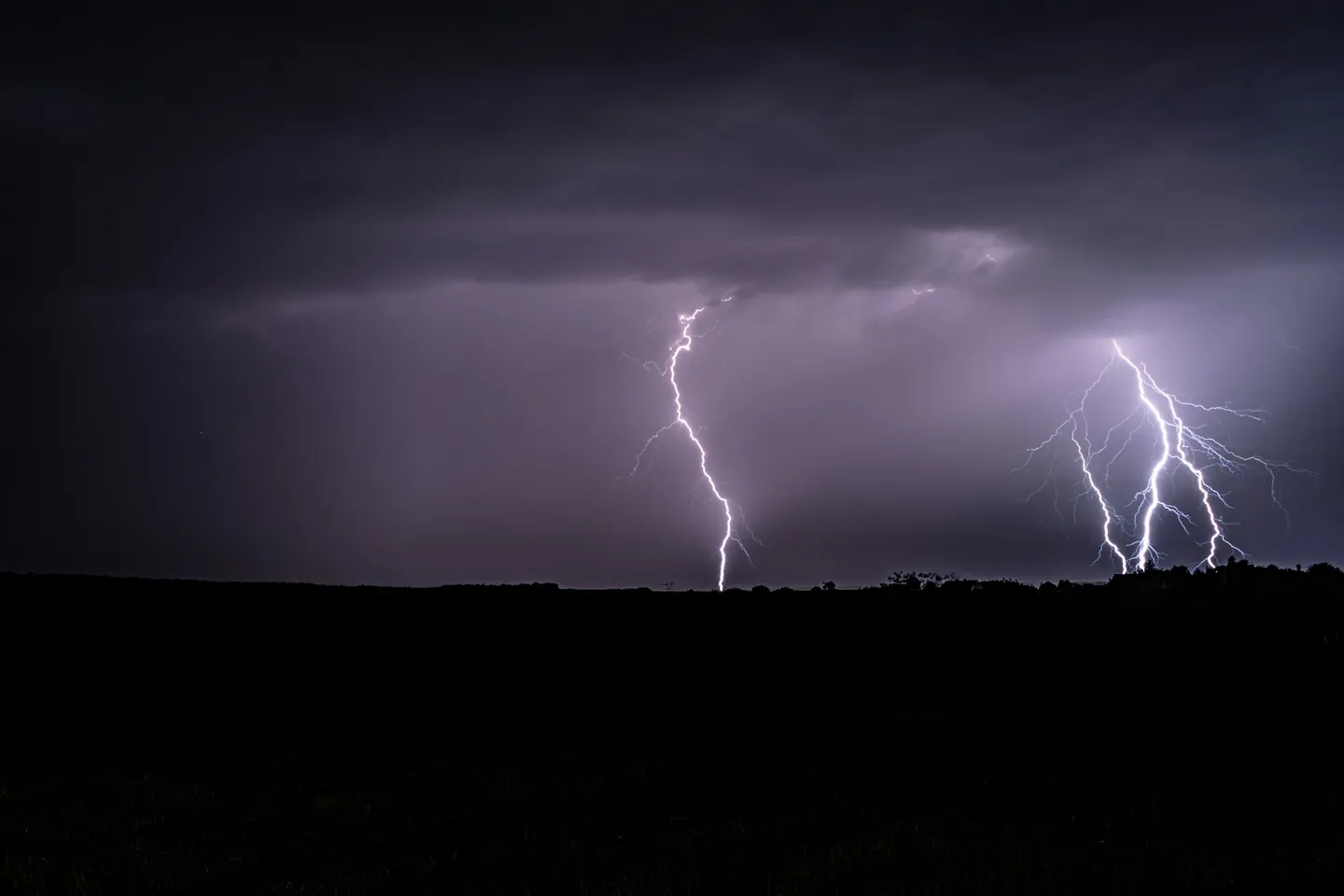Rural UK Emergency Preparedness: What Every Countryside Home Needs

Photo by Nikolett Emmert on Unsplash
Living in the British countryside presents distinct challenges during emergencies that urban dwellers rarely face. When severe weather strikes or infrastructure fails, rural properties often find themselves cut off from immediate help. Government statistics show that ambulance response times in rural areas exceed urban targets by several minutes, while power restoration can take days rather than hours.
The isolation that makes country living appealing becomes a vulnerability when emergencies strike. Mobile phone coverage remains patchy across much of rural Britain, and the Emergency Services Network modernisation continues to face delays in reaching remote areas. Understanding these realities shapes effective emergency planning for rural households.
Medical Response Realities
The stark truth about rural medical emergencies demands honest preparation. While national ambulance standards require Category 1 responses within seven minutes, rural areas routinely experience delays exceeding 15 minutes. For Category 2 emergencies like strokes or heart attacks, the 18-minute target often stretches beyond 30 minutes in remote locations.
These delays make household medical preparedness critical. Beyond basic first aid supplies, rural homes benefit from comprehensive trauma kits, prescription medication reserves extending beyond the standard seven days, and familiarity with emergency medical procedures. Many rural communities have established Community First Responder schemes with volunteers trained in CPR and defibrillator use, bridging the gap until professional help arrives.
Consider maintaining relationships with neighbours who have medical training. A retired nurse three farms over or a volunteer firefighter down the lane could prove invaluable during emergencies. Store emergency medical supplies in accessible, clearly marked locations, and ensure all household members know their whereabouts.
Power Infrastructure Vulnerabilities
Rural power networks face greater exposure to weather damage than their urban counterparts. Overhead lines stretching across exposed countryside succumb to high winds, falling trees, and ice accumulation. The National Grid acknowledges that emergency power cuts affecting at least 5% of UK households can occur without warning, with rural areas often bearing the brunt.
A reliable backup power strategy goes beyond owning a generator. Consider your specific power needs carefully. Essential medical equipment, water pumps, heating systems, and food storage require different power solutions. A small portable generator might suffice for basic needs, while properties with private water supplies or agricultural operations need more substantial backup systems.
Fuel storage becomes crucial when the nearest petrol station sits miles away. Diesel generators offer better fuel stability for long-term storage, while propane systems eliminate fuel degradation concerns. Whatever system you choose, regular testing and maintenance prevent unwelcome surprises during actual emergencies. Professional installation of transfer switches ensures safe operation and prevents dangerous backfeeding into power lines.
Water Supply Resilience
Properties dependent on electric pumps for well water face immediate challenges when power fails. The government recommends storing at least one gallon per person daily for three days, but rural households should plan for extended disruptions.
Manual backup pumps provide insurance for shallow wells under 25 feet, while deeper wells require more sophisticated solutions. Solar-powered DC pumps offer renewable backup power, though British weather limits their winter reliability. Many rural properties benefit from gravity-fed storage tanks positioned to provide water pressure without power.
Water quality requires attention during storage. Food-grade containers prevent contamination, while adding purification tablets or bleach solutions ensures safety over extended storage periods. Rotating stored water every six months maintains freshness. Properties with natural water sources like streams or ponds should keep robust filtration systems capable of producing potable water from questionable sources.
Heating Without Electricity
When power fails in winter, maintaining warmth becomes survival rather than comfort. Wood-burning stoves remain the gold standard for rural emergency heating, operating independently of electricity or gas supplies. Their reliability during extended outages, combined with cooking capability, makes them invaluable investments for country homes.
Properties without wood stoves need alternative strategies. Portable gas heaters provide temporary warmth but require adequate ventilation to prevent carbon monoxide buildup. Every combustion-based heating method demands working carbon monoxide detectors with battery backup. Kerosene heaters offer another option, though fuel storage requires careful consideration.
Beyond active heating, passive measures significantly impact comfort during power cuts. Heavy curtains, draft excluders, and closing off unused rooms concentrate warmth where needed. Designating a single room as the family gathering space during emergencies, preferably one with alternative heating, simplifies temperature management. Thermal mass materials like stone or brick retain and slowly release heat, moderating temperature fluctuations.
Communication Strategies
Rural communication during emergencies requires redundancy beyond mobile phones. PMR446 radios operate license-free in the UK, providing local communication when phone networks fail. These radios enable coordination with neighbours and family members across several miles of open countryside.
For broader communication needs, battery-powered or wind-up radios remain essential for receiving emergency broadcasts and weather updates. The BBC Local Radio network serves as the UK’s designated emergency broadcaster, providing critical information during disasters. Amateur radio offers another layer of communication for those willing to obtain licenses and invest in equipment.
Satellite phones provide ultimate communication insurance for extremely remote properties, though costs remain substantial. More practically, many rural areas benefit from community communication trees, where designated individuals relay information through established chains. Understanding your area’s communication plan before emergencies strike prevents isolation when traditional methods fail.
Weather Event Preparation
The Environment Agency provides comprehensive flood warnings, but rural properties often sit beyond standard monitoring networks. Local knowledge of flood patterns, combined with upstream river monitoring, provides early warning for properties near watercourses. Installing property-level flood protection, from simple sandbags to sophisticated barrier systems, requires advance planning rather than last-minute scrambling.
Winter storms bring particular challenges to rural areas. Deep snow can isolate properties for days, while ice storms devastate power infrastructure. Maintaining supplies for extended isolation becomes essential rather than precautionary. This includes adequate food stores assuming no shop access, fuel for heating and generators, and animal feed for livestock. Snow removal equipment, from simple shovels to tractor-mounted blowers, keeps access routes open for emergency vehicles.
Summer brings different challenges, from drought affecting private water supplies to the growing wildfire risk in British countryside. Creating defensible space around properties, maintaining water reserves for firefighting, and understanding evacuation triggers protect against these emerging threats.
Community Networks and Mutual Aid
Rural resilience depends heavily on community cooperation. Local Resilience Forums coordinate official emergency planning, but informal neighbour networks often provide immediate assistance. Knowing who owns chainsaws, medical training, or four-wheel drive vehicles creates resource maps for emergencies.
Parish councils increasingly develop community emergency plans identifying vulnerable residents, resource locations, and coordination procedures. Participating in these plans, or initiating them where absent, strengthens community preparedness. Regular meetings to discuss emergency preparedness, share skills, and coordinate resources build relationships before crises test them.
Community buildings like village halls or churches often serve as emergency gathering points, providing warmth, communication hubs, and coordination centres. Understanding these resources, including backup power capabilities and supply stores, integrates individual preparation with community resilience.
Food Security Considerations
Rural properties enjoy advantages in food security through space for storage and production. A fortnight’s food supply represents minimum preparedness, accounting for potential isolation during severe weather or infrastructure failure. Focus on nutritionally complete, shelf-stable foods requiring minimal preparation. Manual can openers become essential when electric ones fail.
Home food production provides ongoing security beyond stored supplies. Vegetable gardens, supplemented by greenhouse growing, extend fresh food availability. Small livestock like chickens provide eggs and meat with modest space requirements. Root cellars or cool pantries preserve produce without refrigeration, valuable during power cuts.
Understanding traditional preservation methods adds resilience. Canning, drying, smoking, and curing transform seasonal abundance into year-round security. These skills, once common in rural areas, deserve revival as practical emergency preparedness rather than quaint hobbies.
Financial and Administrative Preparedness
Electronic banking and card payments create vulnerabilities during power and communication failures. Maintaining cash reserves at home, particularly in smaller denominations, enables transactions when electronic systems fail. Rural areas often see cash-only operations during emergencies as shops operate on backup power with manual systems.
Document security requires both physical and digital strategies. Waterproof, fireproof storage protects essential papers including insurance policies, property deeds, medical records, and identification documents. Digital copies stored securely online provide backup access, though printing critical information ensures availability without power or internet.
Understanding insurance coverage before disasters strike prevents unwelcome surprises. Many policies exclude certain disasters or require specific protective measures. Documenting property and possessions through photographs or video, stored off-site, expedites claims processes after emergencies.
Livestock and Agricultural Considerations
Agricultural properties face additional complexities during emergencies. Livestock require water, food, and shelter regardless of human convenience. Backup water pumping for animal supplies often exceeds household needs. Generator sizing must account for milking equipment, ventilation systems, and refrigeration for perishable products.
Emergency plans must address animal evacuation or shelter-in-place decisions. Large animal transport requires advance arrangement, while temporary fencing materials enable rapid paddock reconfiguration. Veterinary supplies for common emergencies, from bloat treatment to wound care, prevent minor issues becoming major crises when professional help remains hours away.
Feed storage calculations must account for potential supply chain disruptions. A fortnight’s reserve might suffice for household pets, but livestock operations need deeper reserves. Alternative feeding strategies, from hay production to grazing management, provide flexibility when commercial supplies fail.
Continuous Improvement
Emergency preparedness evolves rather than arrives complete. Starting with basic supplies and gradually building comprehensive systems prevents overwhelming initial costs and complexity. Regular testing identifies gaps before emergencies expose them. Annual reviews ensure plans reflect changing household compositions, new technologies, and lessons from actual events.
Seasonal maintenance routines keep equipment ready. Generators need periodic running, fuel requires rotation, batteries demand replacement, and first aid supplies expire. Creating maintenance schedules prevents degradation of critical systems. Recording lessons from minor emergencies improves response to major ones.
The UK government’s preparedness campaign emphasises that resilience requires whole-society participation. Rural properties, through their inherent vulnerabilities and strong community traditions, exemplify this approach. Individual preparation, combined with community cooperation and official support, creates robust emergency resilience.
Building rural emergency preparedness requires honest assessment of vulnerabilities, practical investment in backup systems, and strong community relationships. The countryside’s isolation demands self-sufficiency, but also enables community cooperation often absent in urban settings. Through careful planning and gradual improvement, rural homes can maintain safety and comfort despite nature’s challenges or infrastructure failures.
The investment in emergency preparedness pays dividends beyond disaster response. Backup systems provide daily convenience during minor disruptions, community relationships enrich rural life, and practical skills connect us with traditional countryside resilience. When emergencies strike, prepared rural households protect their families while supporting vulnerable neighbours, transforming potential disasters into manageable challenges.
